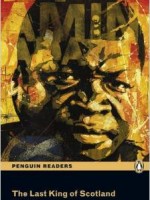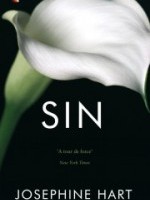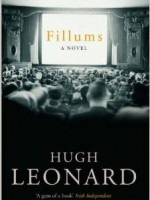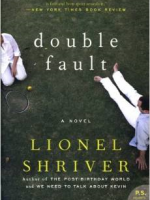Irish Film Censorship: A Cultural Journey from Silent Cinema to Internet Pornography by Kevin Rockett
(Published by Four Courts Press)![]()
 |
If you’ve seen the 1973 film The Exorcist in recent years, everything from the dodgy make-up to the piano wire that elevates Linda Blair’s possessed body looks dated and laughable. However, it’s not that long ago since the film was banned in Ireland. And since we’re talking 1970s Ireland, a film that contains scenes where 12-year old possessed girl a) masturbates with a crucifix saying “fuck me Jesus”, b) calls a priest a “cocksucker” and c) she vomits on said priest – it’s no surprise the censor’s office went at the reel with a pair of scissors. This may seem archaic compared to films of today, but then the Irish Film Censor’s Office has evolved to keep up with an Ireland that has radically changed since the 1970s – not just in terms of decades, but also on a year-to-year basis. In his introduction, Kevin Rockett is obviously aware of this and points out the underlying principle of his book. “Perhaps the most fundamental question to censorship is under what dispensation can a society deny access to its adult population any words or images, particularly if these representations are not recordings of actual criminal activity?”
Irish Film Censorship: A Cultural Journey from Silent Cinema to Internet Pornography looks at the office of the Censor since its inception in the 1920s up to present day multimedia Ireland. That it was not written before now is largely down to red tape and the onwards march of modernisation that has marked Irish society over the last 30 years. It’s not that long since the Film Censor’s office was still shrouded in mystery, at least until the 1998 Freedom of Information Act when over 18,000 reports on films going back as far as the early 20th century, were released. Since then, Rockett who is a film lecturer in Dublin’s Trinity College, has been collating the information that forms the bulk of this book.
There’s a LOT of information in here but to Rockett’s credit, most likely due to his experience of writing about film, it is presented in an interesting and informative manner. Since the 1923 Censorship of Films Act, 50,000 decisions have been made: 2,500 films have been banned and 10,000-11,000 have been cut. The book starts with the origins of censorship and works its way through the individual film censors themselves and then weaves around an array of topics like the Free State, representations of family, the role of the church, the Hays Code, Film Noir, Elvis, horror, art house cinema, forbidden words, sex in films, censorship of Sinn Fein, newsreels, the Internet and much more.
One of the most interesting revelations about the role of the Film Censor is that it falls under the remit of the Civil Service and that no experience, qualification, or even interest in film was sought for the job. It wasn’t until 1972 – almost 50 years since the 1923 Censorship of Films Act – with the appointment of Dermot Breen, that the censor had a background in film. Up to this point the role was less about film and more about upholding morality.
If much of the content being censored came from America (prompting the first censor James Montgomery to say “One of the greatest dangers of films is not the Anglicisation of Ireland but the Los Angelesation of Ireland’), so did the orthodoxy that kept it in check, at least up to the 1950s when the Hays Code was the benchmark against which acceptable levels of morality in film were measured. As part of the Hays code (named after Will Hayes, formerly Republican administration Postmaster-General), various subjects were taboo. There were eleven strictly forbidden ‘don’ts’, which were references or depictions of crimes against the law, drugs, prostitution, nudity, venereal diseases, any mention of sexual perversions, childbirth scenes, ridicule of clergy and mixed race relationships. An additional list of 26 ‘Be Carefuls’ which included men and women in bed together, surgical operations, the national flag, sedition, rape or the “deliberate seduction girls” was also adhered to.
The church state duality in Ireland meant there could be an input into what dictated acceptable behaviour in films. The Film Appeals Boards has always had a representative of the Catholic and Protestant churches in Ireland on the panel. At one point, no criticism of the church was allowed even in the fictional realm of film. It didn’t matter if a film positively represented the church – as in The Song of Bernadette – it could still be cut. A line where the Dean of Lourdes alludes to the idea of the Immaculate Conception as something “great scholars have wracked their brains about it for centuries” was cut. Monty Python’s Life of Brian was deemed blasphemous and banned for years and yet a film like The Passion of the Christ which is horrifically violent was shown here with a 12PG cert and there is no doubt that if the film didn’t have a religious theme, it would have been an 18s cert.
We all know about the uproar over films like Natural Born Killers, Driller Killer or I Spit on Your Grave, but one of the most revealing elements of the book are the things that were cut, despite their seeming innocence, even in the past. In Singing in the Rain Cyd Charisse’s extended, elevated leg was judged to be risqué and a famous dance scene with Gene Kelly was also deemed too ‘erotic’. A scene in Hitchcock’s Rear Window where James Stewart talks to Grace Kelly about ‘staying overnight uninvited’ was deemed smutty and depicted female independence too heavily. The ‘Irish’ classic The Quiet Man had a number of cuts made, including two references to the bed being delivered – Michaleen Flynn’s line “Impetuous! Homeric!” was cut, as was his remark about the size of it – “a man would have to be a sprinter to catch his wife in that bed”.
Rockett documents how much the role has changed, particularly with James Kelleher the current censor and his predecessor, Sheamus Smith, dubbed “the Irish film censorships’ first liberal” in the book. Again the anecdotal detail and trivia which bookend this work, stops it from being a quagmire of facts and footnotes. While Smith only banned ten films and cut only 16 in his 17-year term in office, there is an amusing entry from him about Prince’s film Prince, a Sign of the Times. In one scene Prince and Cat ascend a staircase removing their clothes under a neon sign of ‘Love – Sex’. As Prince lies on Cat, her leg wraps around him and Smith’s humorous order on this was: “Amputate leg”!
It’s quite a tome but is extremely readable not least due to the amount of anecdotes, inside stories and trivia it contains. Rockett’s achievement serves as a fascinating guide through an office that seismically shifted its view on film in line with societal changes at large. It offers a unique insight into the social, moral and cultural make-up of Irish society and is an essential book for any film lover.



